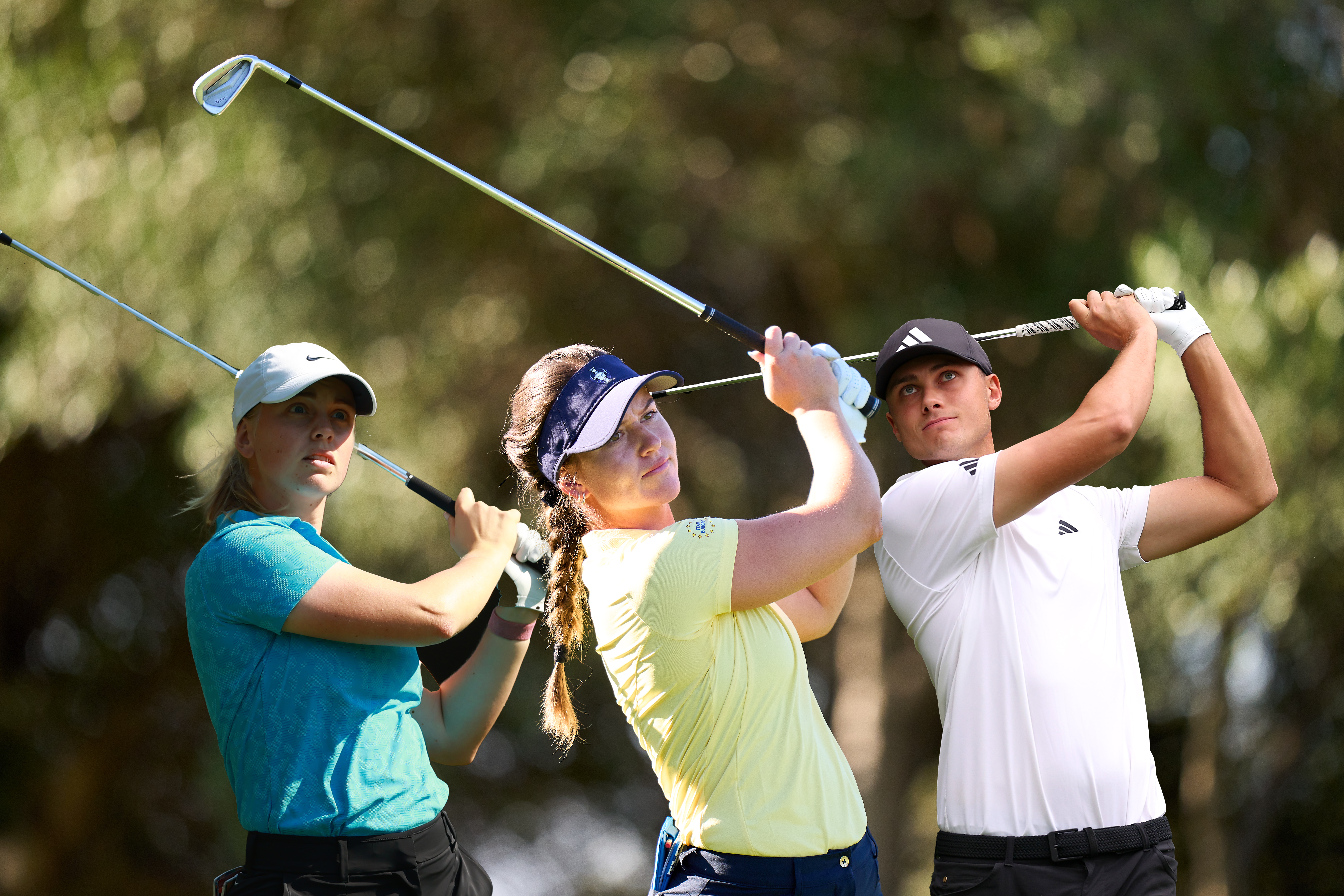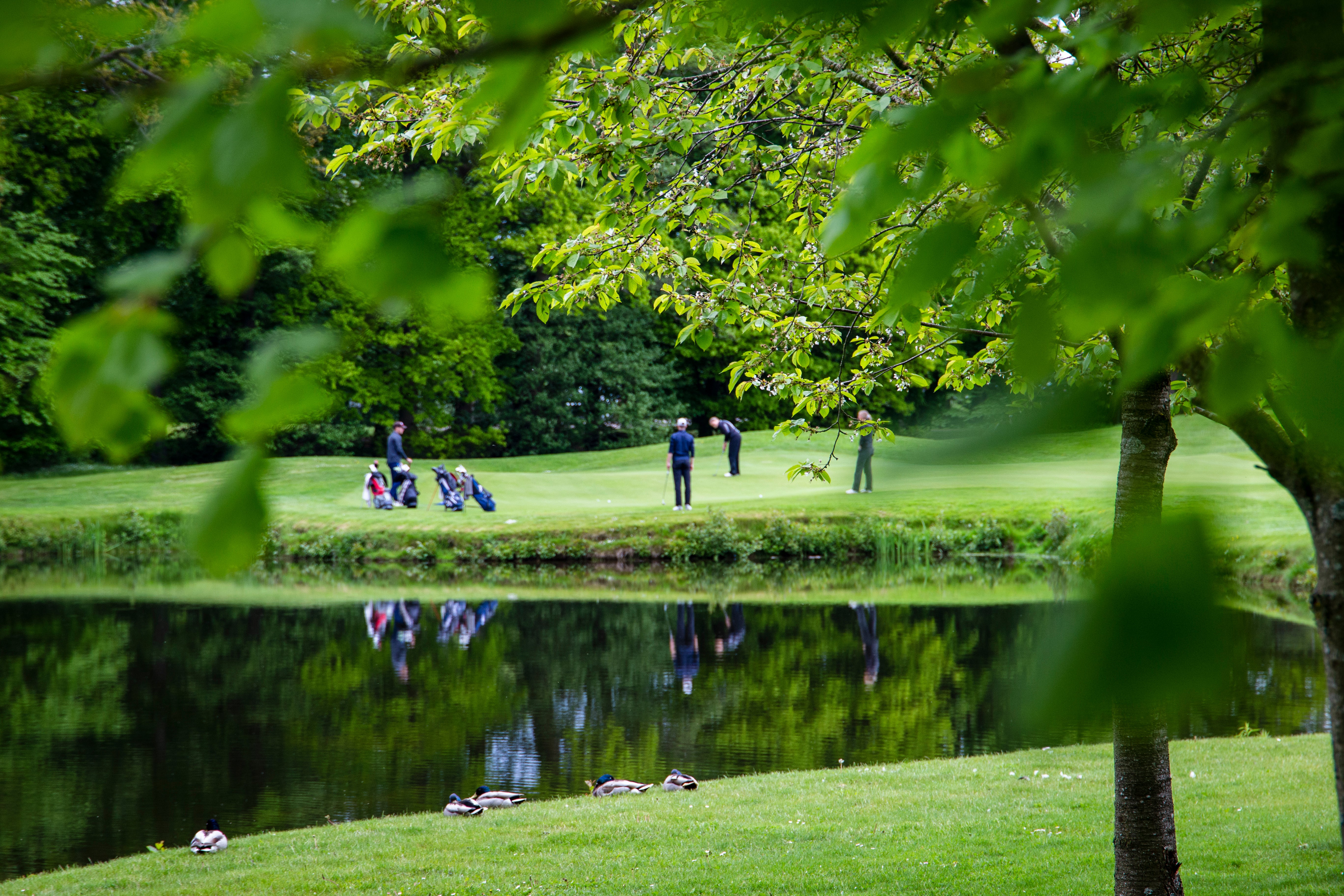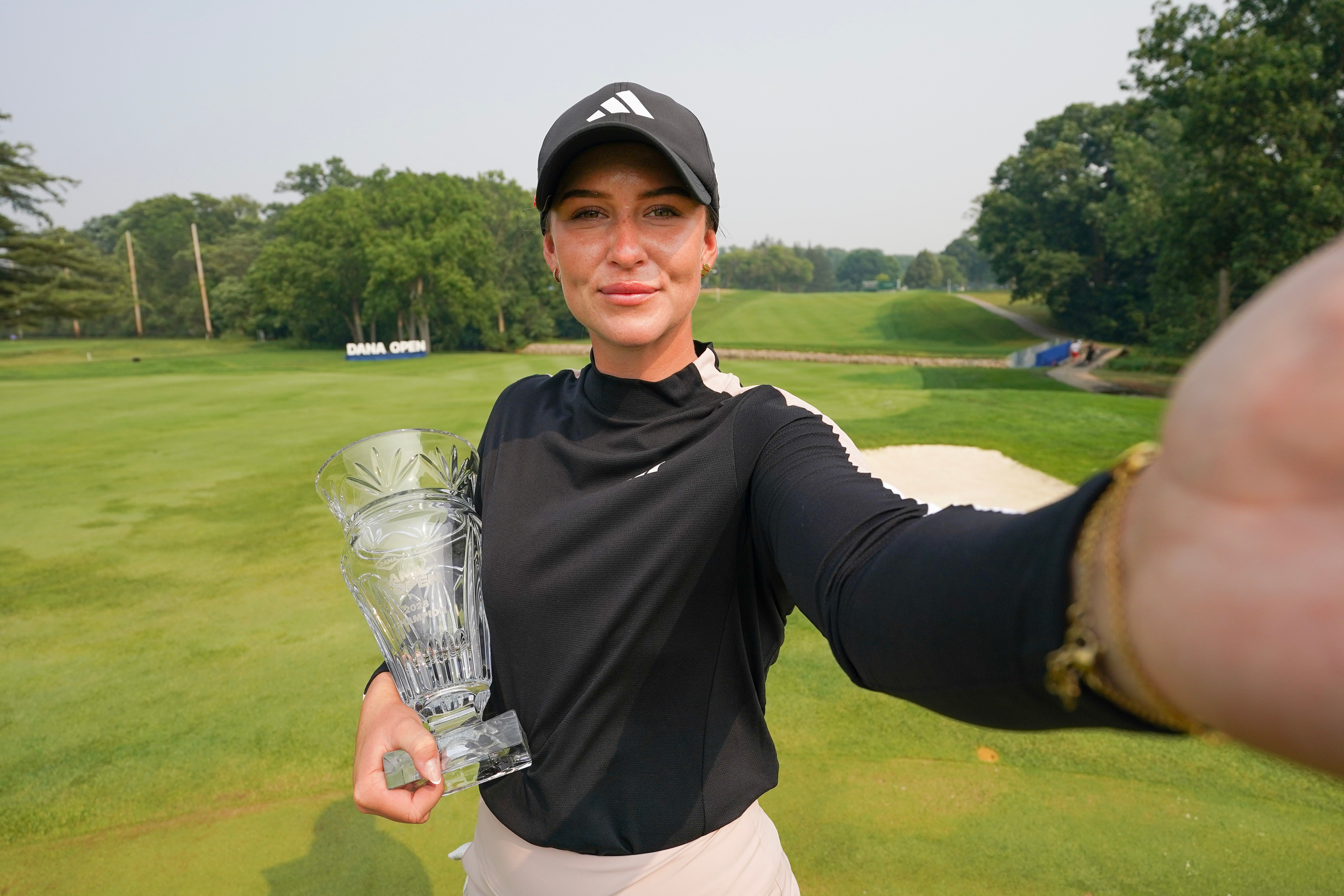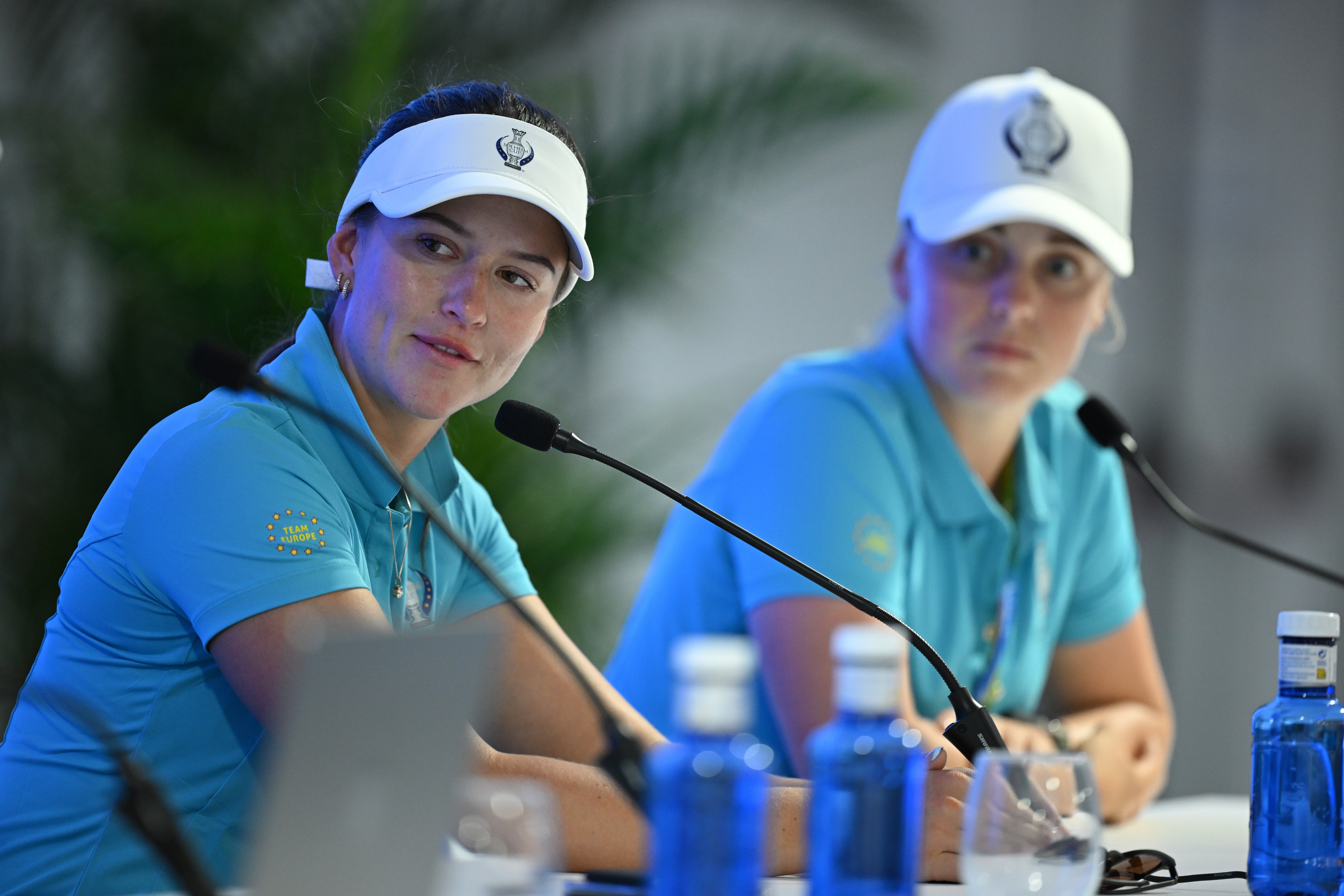School of golf champs: Inside the Swedish academy breeding Team Europe’s Solheim and Ryder Cup stars
Days start with a punishing schedule that’s more Mark Wahlberg than Mark O’Meara, but the results are extraordinary — four of Europe’s current 24 Ryder and Solheim Cup team graduated from this unassuming Swedish boarding school. Lawrence Ostlere talks to the principal producing golf’s next wave of global superstars


“Of course, this is what we want to happen,” says school principal Anders Nilsson. “But for three students, in the same year group, at the same time? That’s unbelievable.”
Nilsson runs Filbornaskolan, a school in Helsingborg which draws some of the most talented young athletes from across Sweden. It has produced Olympic swimmers and professional footballers including Helsingborg’s most famous export, Henrik Larsson. But perhaps the school’s greatest achievement will unfold over the next two weeks.
Team Europe have selected 24 golfers to face USA for the Solheim and Ryder Cups over the coming days, and remarkably, four of them attended Filbornaskolan. One is the experienced Madelene Sagstrom and the other three – Linn Grant, Maja Stark and Ludvig Aberg – are recent classmates who have quickly established themselves among the best players in the world.
On the surface it is a miraculous cluster of young promise. But scratch a little deeper and what you discover is an intelligent system designed to nurture talent, and let it bloom on the international stage.
***
Filbornaskolan is a free-admission boarding school, and most of its 700 students are enrolled on one of its 11 varied sports programmes, from football to figure skating.
A typical day for golfers is a regime Mark Wahlberg would be proud of: breakfast in the dorm house at 6.30am and an early morning school class; physical training from 8.30-10am before lessons, lunch and more lessons until 3pm; then a 6km cycle to Vasatorps Golf Club outside the city, where 54 holes play out amid thick woods and water traps. The students work on their game until 6pm before having dinner at the club, then go back out to practice for another two hours (unless it’s winter when they use the floodlit driving range or indoor practice centre). Afterwards they cycle home, complete any school assignments and are in bed at 10pm.
The boarding-house staff impose firm rules forbidding alcohol or drugs, and school work is not optional. “If they’re to go and take part in a national team or competition – if they don’t do the school, they don’t do the competition,” says Nilsson.


But it is about structure rather than discipline: the approach is not to cajole but rather guide students already motivated to succeed. “If you want an international career in sport then you’re serious. They’re so ambitious and they want to do school equally well, so that sets the culture for the whole school.”
What is “unique”, says Nilsson, is the time they dedicate to their students. Most Swedish high schools cover three years aged 16-19, but Filbornaskolan offers an extra year to study and train. The school is also well funded by local and state governments which helps acquire another key to success: elite coaches. There is competition from another sports school in the north, and from Norway, but Nilsson believes his staff are the best around.
“Especially in golf,” he adds. “They are extremely good.”
***
The coach in charge of the school’s golf department is Hans Larsson.
He has been working at Filbornaskolan for 22 years and describes a “spiral” of success: over time he and his staff make mistakes and so they improve – in coaching, in physical training, in competition, in education. As they get better results, their reputation grows, and so the pile of applications on Larsson’s desk at the start of each summer grows too. The best players are prepared to move their lives hundreds of miles to join his programme.
Even so, Larsson knows the intake born in 1999 containing Grant, Stark and Aberg was lightning in a bottle. “I’m pretty sure we won’t have that same class for at least a couple of years with three players in the Solheim and Ryder Cup,” he laughs. After knocking on a few classroom doors, Larsson has found a quiet place to talk to The Independent. “It’s unheard of, I would say. It’s a special group.”
That’s a philosophy we try to put into all sports: you can’t do it on your own
Grant stood out from the start, perhaps because golf is in her blood: her grandfather James Grant was a Scottish professional who emigrated to Helsingborg, and her father played on the Swedish Tour. Aberg, on the other hand, was just another good golfer among many when he arrived.
“It took time before he took up the physical training a notch – bigger, stronger, more explosive muscles,” recalls Larsson. “It took time before he started practicing golf with quality, more deliberately. At the same time he’s always been a chilled calm guy and I think that’s helped him a lot, especially when it gets stressful. That’s because of his parents, in his genes, so I wouldn’t say that’s something we’ve taught him.”


Natural ability and elite coaching are only part of the formula, though. What is key, school principal Nilsson says, is that the best young players in the country are brought together, in the same classroom and on the same golf course. The superstar year group is no coincidence – it’s the result of symbiosis.
“You get better if you have to compete daily with other students who are equally good. I don’t think Maja, Linn and Ludvig would be this good if they had been in different year groups, because they compete all the time – ‘you beat me, but you’re not going to beat me again tomorrow’. That’s a philosophy we try to put into all sports, whether team or individual: you can’t do it on your own.”
***
With a population of only 10 million, Sweden punches well above its weight in the world of professional golf. There are currently five Swedes in the men’s top 100 players and four in the women’s rankings – only the United States, Australia, Japan and South Korea have more top-100 players than Sweden’s nine. And of those nine, six went to Filbornaskolan.
Perhaps that is no surprise, given the strategic way talent is cultivated. It is unlikely anything similar will develop in the UK. There are some golf programmes in the private schooling system but for the most part, young players develop at their local golf club rather than a sport-specialist high school. They don’t tend to spend those decisive late-teen years immersed in such a dedicated environment, surrounded by such high skill.
The goal for just about every young player in Europe is the same: to win a place at an American university. College golf is the ultimate finishing school and a door to the professional game. It is where students find the highest standards of coaching and the latest high-tech monitors analysing every aspect of every practice shot. If you want to dial in your wedges to the nearest yard – and you have to these days – then a US university is the best place to be.

It is highly competitive, but all three Filbornaskolan graduates won places in the US college system before turning pro. Grant is now ranked No 15 in the world; Stark already has six European titles to her name; and such is Aberg’s immediate impact that he will be the first golfer ever to play in the Ryder Cup without having yet played in a major tournament. Aberg’s school golf instructor, Larsson, remains his swing coach today.
The Ryder and Solheim Cups are two of the most viewed events in men’s and women’s sport, and staff and students at Filbornaskolan will watch avidly over the coming days as Team Europe take on the Americans. The Cups will ultimately be won and lost on the grass of Malaga and Rome, but they will know that Europe’s challenge was built in no small part at a high school in Helsingborg.






Join our commenting forum
Join thought-provoking conversations, follow other Independent readers and see their replies
Comments